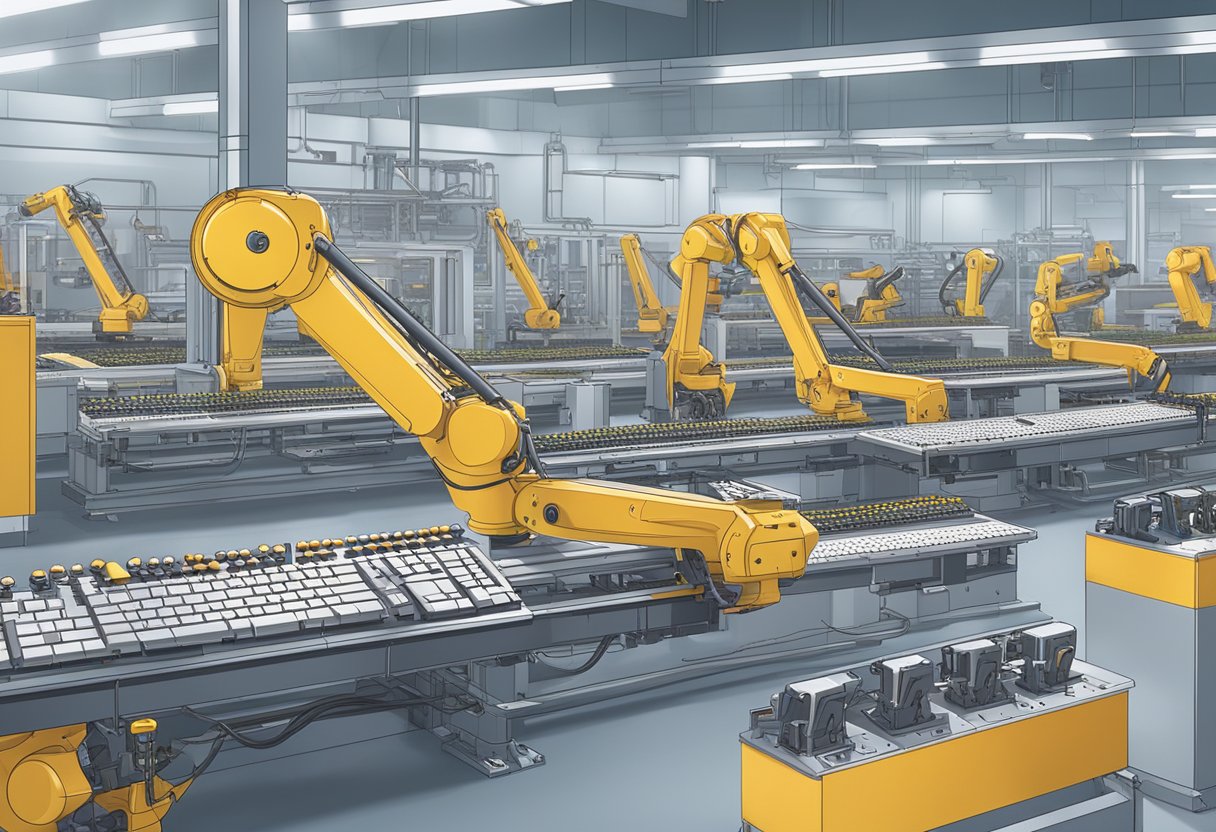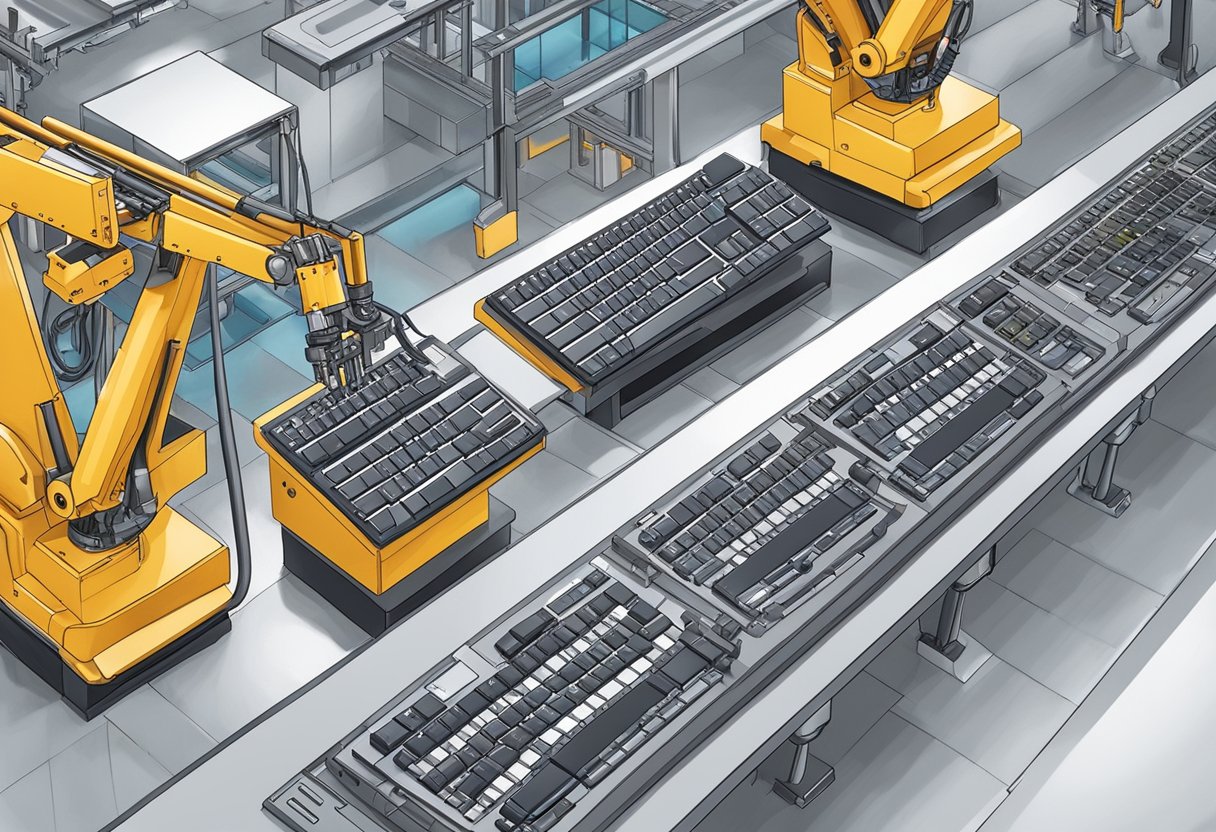Contact
Write to Us And We Would Be Happy to Advise You.
Do you have any questions, or would you like to speak directly with a representative?
By peter
If you’re in the market for a new keyboard, you might be wondering what type of keyboard to choose. One option you might consider is a membrane keyboard. These keyboards are designed with a thin, flexible membrane that sits between the keys and the electronic circuits beneath them. When you press a key, the membrane depresses and makes contact with the circuit, registering your keystroke.

Membrane keyboards are popular for several reasons. For one, they tend to be less expensive than other types of keyboards, such as mechanical keyboards. They’re also generally quieter to type on, which can be a plus if you’re working in a shared space. Additionally, membrane keyboards are often more resistant to spills and other types of damage, since the membrane helps to seal out dust and debris. If you’re looking for a keyboard that will last you a long time, a membrane keyboard might be a good choice for you.

When it comes to manufacturing membrane keyboards, there are two main processes: screen printing and digital printing. Screen printing is the traditional method, while digital printing is a newer technology that has gained popularity in recent years. Both methods have their advantages and disadvantages, and the choice between the two depends on the specific requirements of the project.
Screen printing involves using a stencil to transfer ink onto the surface of the membrane. The stencil is made by blocking out areas of a mesh screen with a light-sensitive emulsion, which is then exposed to light. The areas that are not exposed to light are washed away, leaving a stencil that can be used to transfer ink onto the membrane. Screen printing is a cost-effective method for large volume production runs, and is well-suited to printing simple designs with few colors.
Digital printing, on the other hand, involves using a printer to directly apply ink onto the membrane. This method is more expensive than screen printing, but is better suited for printing complex designs with many colors. Digital printing also allows for greater flexibility in terms of customization, since it is possible to print different designs on each membrane.
The materials used in membrane keyboard manufacturing include the membrane itself, the adhesive layer, and the circuit layer. The membrane is typically made from a flexible material such as polyester or polycarbonate, which is coated with a conductive material such as silver or carbon. The adhesive layer is used to bond the membrane to the circuit layer, which is made from a flexible printed circuit board (PCB) that contains the electrical traces and contact pads.
In addition to these main components, membrane keyboards may also include additional layers such as a protective overlay, which is a clear layer of material that is placed over the membrane to protect it from wear and tear. The protective overlay may be made from materials such as polycarbonate or acrylic, and may be printed with graphics or text to enhance the appearance of the keyboard.
Overall, membrane keyboard manufacturing is a complex process that requires careful attention to detail and a thorough understanding of the materials and processes involved. By choosing the right manufacturing process and materials for the project, it is possible to create a high-quality membrane keyboard that meets the specific needs of the customer.

When it comes to membrane keyboard manufacturing, there are several key players in the industry. These companies are known for producing high-quality, durable, and reliable membrane keyboards that are used in a variety of applications. In this section, we will take a closer look at the leading manufacturers and emerging companies in the industry.
The leading manufacturers of membrane keyboards have been in the industry for decades and have established themselves as trusted brands. These companies have a wealth of experience and expertise in designing and engineering membrane keyboards that meet the needs of their customers. Some of the leading manufacturers in the industry include:
In addition to the leading manufacturers, there are also several emerging companies in the membrane keyboard industry. These companies are relatively new to the industry but are quickly making a name for themselves with their innovative designs and high-quality products. Some of the emerging companies in the industry include:
In conclusion, the membrane keyboard industry is dominated by a few leading manufacturers, but there are also several emerging companies that are quickly making a name for themselves. Whether you are looking for a high-quality gaming keyboard or an ergonomic keyboard for office use, there is a membrane keyboard out there that will meet your needs.
As membrane keyboards have become more popular, manufacturers have been working hard to improve the technology behind them. One of the most significant advancements in recent years has been the development of more durable and reliable membranes. This has been achieved through the use of new materials, such as polyurethane and polyester, which are more resistant to wear and tear than older materials like PVC.
Another important development has been the integration of backlighting into membrane keyboards. This has been made possible through the use of LED technology, which allows for much brighter and more energy-efficient lighting than traditional bulbs. Backlighting is particularly useful for gamers and other users who work in low-light environments, as it makes it easier to see the keys.
Looking ahead, it’s clear that membrane keyboard technology will continue to evolve. One area where we can expect to see significant progress is in the development of more advanced tactile feedback systems. This will allow for more realistic and responsive typing experiences, which will be particularly important for gamers and other users who demand high levels of precision.
Another trend that is likely to emerge is the integration of more advanced sensors and tracking systems into membrane keyboards. This will allow for more sophisticated input methods, such as gesture recognition and eye tracking. These technologies have the potential to revolutionize the way we interact with our computers, and could lead to a whole new generation of input devices.
Overall, the future of membrane keyboard technology looks bright, with manufacturers continuing to push the boundaries of what is possible. Whether you are a gamer, a programmer, or just a casual user, you can be sure that there will be a membrane keyboard out there that meets your needs.
When choosing a membrane keyboard manufacturer, it is essential to ensure that the manufacturer follows quality assurance and industry standards. This ensures that the final product is of high quality and meets the required specifications.
Certification processes, such as ISO 9001, ensure that the manufacturer follows strict quality management systems. This certification process ensures that the manufacturer follows industry standards and best practices. Manufacturers that are certified with ISO 9001 are more likely to produce high-quality products that meet customer requirements.
Manufacturers that follow industry best practices are more likely to produce high-quality products. Some of these best practices include using high-quality materials, testing the products thoroughly, and having a team of experienced engineers. Using high-quality materials ensures that the final product is durable and can withstand harsh environments. Testing the products thoroughly ensures that the final product is of high quality and meets the required specifications. Having a team of experienced engineers ensures that the product is designed correctly and meets customer requirements.
In conclusion, when choosing a membrane keyboard manufacturer, it is essential to ensure that the manufacturer follows quality assurance and industry standards. This ensures that the final product is of high quality and meets the required specifications. Certification processes, such as ISO 9001, and industry best practices, such as using high-quality materials and testing the products thoroughly, are some of the factors to consider when choosing a manufacturer.
The global membrane keyboard market is projected to expand at a CAGR of 3.7% during the forecast period from 2021-2028. The growth can be attributed to factors such as growing demand for affordable and ergonomic keyboards in developing countries, the rising popularity of membrane keyboards among gamers due to their durability and low cost, and the increasing use of membrane keyboards in industrial applications due to their resistance to dust, dirt, and liquids. The market is also driven by the development of new technologies such as the integration of touchpads and backlighting in membrane keyboards.
The membrane keyboard market is highly competitive with the presence of several established players and new entrants. The key players in the market are focusing on product innovation, partnerships, and collaborations to gain a competitive advantage. For instance, in 2020, Fujitsu Components America, Inc. partnered with Elec & Eltek (E&E) to develop a customizable membrane keyboard switch for medical devices. The partnership aimed to provide a reliable and cost-effective solution for medical device manufacturers.
The demand for membrane keyboards varies across different regions. Asia-Pacific is expected to dominate the market during the forecast period due to the presence of a large number of electronic device manufacturers in countries such as China and Japan. North America and Europe are also significant markets due to the high adoption of membrane keyboards in industrial and gaming applications. The market in Latin America and the Middle East and Africa is expected to grow at a moderate pace due to the increasing adoption of electronic devices in these regions.
In conclusion, the global membrane keyboard market is expected to grow at a steady pace during the forecast period due to the increasing adoption of electronic devices and the development of new technologies. The market is highly competitive, and players are focusing on product innovation to gain a competitive advantage. The demand for membrane keyboards varies across different regions, with Asia-Pacific expected to dominate the market.
Do you have any questions, or would you like to speak directly with a representative?